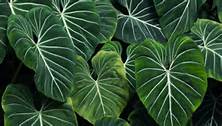Well its that time of year again, SPRING! Many of you are thinking about getting a new puppy or you may have already picked one up, here are a few thing I think you need to know about keeping your new addition safe. Consider this your spring cleaning! Here is a website that I found very helpful for all the new puppy and dog owners.
Puppies are especially vulnerable because of their natural curiosity, lack of training and experience, small size, and still-developing bodies. Before you bring a puppy — or a dog, for that matter — home, look around your house and grounds with an eye for potential dangers: plants, pills, and poisons are the most typical. Make sure they’re put away securely — well out of your dog’s reach — and always put back where they were. A good place to start dog-proofing is with houseplants and yard plants. Many common plants are poisonousto dogs. To protect your pooch, you can remove poisonous plants from the premises, move them out of reach (in a hanging basket, for instance), put them behind a dog-proof barrier, or supervise the dog closely when he’s around them. Here are some more dog-safety tips.
Poisonous Plants
We’ve already talked about how much dogs enjoy eating plants and grass. If you have a green thumb, you probably have lots of ornamental plants in and around the house. Since you grow them for show and never try to eat them, you might never have thought about whether they were poisonous. The leaves and stems of some plants contain substances that can be irritating and even toxic to the pet who chews on them. Common houseplants that can be harmful if swallowed include: dieffenbachia (or dumb cane), philodendron,caladium, and elephant’s ear. Many yard plants such as flowers, shrubs, and trees are also dangerous to dogs.
The bulbs of flowers such as amaryllis, daffodils, jonquils, narcissus, hyacinth, and iris are poisonous, as are azaleas, holly berries, hydrangea, ligustrum, privet hedges, oleander, English ivy, jasmine, and wisteria. Of course, mushrooms and toadstools growing in the yard may be deadly. If your dog is the curious type, be extra careful about the kind of plants you keep around.
Other Dangers
Next, search the house for pills or poisons that might be accessible to a puppy. Household staples such asaspirin, acetaminophen (Tylenol and similar products), ibuprofen (Advil and similar products), cold or cough medications, diet pills, even chocolate and macadamia nuts can make your dog very sick or even kill him. Some household poisons are more obvious — snail bait, ant and rodent poisons, insecticides, and herbicides. Others — most notably cleansers and solvents — may not seem to pose a hazard but are attractive to dogs and extremely dangerous. There’s still an annual death toll among dogs from antifreeze poisoning. The sweet odor and taste make puddles of spilled or discarded antifreeze a deadly temptation for animals.
The chocoholics among us would never think of the rich, dark stuff of our magnificent obsession to be anything but food of the gods. But the fact is, chocolate contains two compounds toxic to dogs: theobromine and caffeine. Baker’s chocolate is among the purest — it hasn’t been sweetened with sugar or mixed with other ingredients — and therefore the most dangerous. Just three ounces of baker’s chocolate can kill a 20-pound dog. Although milk chocolate is less toxic by virtue of added ingredients, it’s actually more dangerous because the milk and sugar make it more palatable.
The bitter taste of baker’s chocolate — or even semi-sweet chocolate — may discourage a dog from eating a fatal dose. You’ve heard the saying, “Life is like a box of chocolates. You never know what you’ll get.” Well, when a pooch bites into a box of chocolates, you know just exactly what he’ll get: sick as a dog. Signs of chocolate poisoning include rapid heartbeat, muscle tremors, vomiting, and seizures. Without treatment, the dog can lapse into a coma and die. So keep anything chocolate out of paw’s reach, especially at popular chocolate gift-giving times like Valentine’s Day, Easter, Halloween, Hanukkah, or Christmas.
Who would think those yummy Macadamia nuts would be poisonous to some dogs, but they can be. Although somewhat rare, it can happen. As with chocolate, the degree of toxicity varies with the amount of nuts ingested. Common symptoms include weakness, depression, vomiting, staggering, tremors, and fever. Most symptoms occur less than 12 hours after ingestion. Call your vet immediately if you see your dog eating macadamia nuts or if you suspect he has eaten them.
While most dog owners can understand why any living creature, dog or human, would be attracted to chocolate, many make the tragic mistake of assuming their dogs won’t be attracted to potentially dangerous substances that don’t seem to be edible. Because dogs don’t have hands, they use their mouths to investigate new things. The safest course of action is to put anything that isn’t dog food or a dog toy safely out of reach. Poisons — including household cleaners, bleach, and the like — are best kept on high shelves or in cabinets secured with child safety locks.
Post your veterinarian’s number by the phone, and keep a good pet first-aid book on hand — one that includes a comprehensive list of common poisons and what to do if your dog swallows them. If you know what the dog ate, take the container with you to the veterinarian. If your puppy is vomiting but you don’t know what he ate, take a sample of the vomit to help the veterinarian make a diagnosis.


